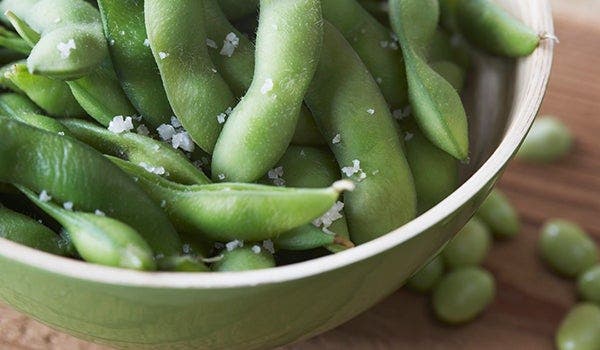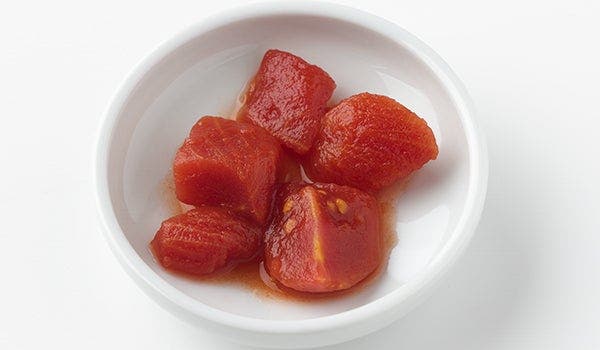How to shop for groceries once and eat for two weeks


There are a million reasons not to want to go grocery shopping: You’re exhausted after a long day of work, the store is kind of far from your house, or you dislike the experience in general and want to do it as rarely as possible. But you still need to have food in your house. The answer is to get a little smarter about your shopping strategy so that you only have to go once every two weeks. Here’s how to plan your next trip and what foods to stock up on.
How to make your shopping list
If you want a two-week supermarket haul, you need to shop for items that have a long shelf life and are versatile, says dietitian and recipe developer Leslie Fink, R.D. “Think about foods that serve multiple purposes.” For example, plain Greek yogurt — generally good for at least 14 days from purchase — is useful in sweet and savory dishes alike, while canned diced tomatoes are a base ingredient across cuisines, including Italian, Mexican, Greek, and Spanish.
You should also stick to foods you already know and like. Sure, canned green beans might last until the next presidential election, but if you don’t like them, the can will just languish in your pantry.
Another tip from Fink: Make friends with your freezer. Frozen, pre-cut fruits and veggies are as nutritious as fresh, so grab a few bags of your favorites to have at the ready. And remember: You can freeze most refrigerated items — like sliced bread, fresh chicken, and ground meat — to help them last longer without undermining quality.
Ready to go shopping? Read on for Fink’s list of supermarket staples that stay good for at least 14 days, followed by a few toss-together ideas for meals and snacks.
Long-lasting groceries to toss in your cart
Fresh produce

- Citrus fruits such as oranges, grapefruits, and lemons
- Crunchy apple varieties such as Granny Smith, Fuji, and Honeycrisp
- Carrots
- Celery
- Raw beets
- Cabbage
- Potatoes
- Onions
- Garlic
Meat and dairy

- Firm or semi-firm cheese, such as cheddar, Parmesan, and part-skim mozzarella
- Plain Greek yogurt and cottage cheese (look for fat free if you want a ZeroPoint option)
- Raw chicken breast, thighs, and drumsticks
- Ground chicken, turkey, and beef (get ones that are 90% lean or leaner if you’re looking for a ZeroPoint option)
- Eggs
- Milk
Frozen items

- Bell pepper strips
- Cauliflower rice
- Broccoli florets
- Edamame
- String Beans
- Vegetable mixes such as Normandy blends, California blends, and stir fry blends
- Strawberries, blueberries, and other berries, including berry blends
- Shrimp
- Pre-portioned frozen fish like salmon, cod, and haddock
- Veggie burgers
Canned and jarred items

- Diced tomatoes
- Pasta sauce
- Chicken or vegetable broth
- Beans
- Corn
- Fruit packed in juice
- Canned salmon and/or tuna
- Salsa
- Prepared soup
Grains and other pantry items

- Dried pasta
- Dried, uncooked grains such as brown rice, farro, quinoa, and barley
- Breakfast cereal
- Oats and oatmeal
- Unsalted or lightly salted dry-roasted or plain nuts, such as sliced almonds
- Peanut butter, almond butter, and other nut and seed butters
- Dried fruit, such as cranberries or apricots
- Crackers or rice cakes
- Tortilla chips
- Pre-sliced bread
- English muffins
Simple meals to make from foods in your pantry
Now that you’re loaded up with food, what do you actually cook? Here are some ideas.
Filling breakfasts
- Scrambled eggs with sautéed sliced onions and frozen peppers, served with toasted English muffin
- Oatmeal prepared with frozen berries and milk, topped with sliced almonds
- English muffin breakfast pizza made with part-skim mozzarella and tomato sauce
Tasty lunches
- Tuna salad made with Greek yogurt, diced celery, and diced onion, served on toast with a cup of prepared soup
- Tex-Mex bowl with sautéed chicken, brown rice, black beans, corn niblets, shredded cheese, and salsa
- Pasta tossed with tomato sauce and sautéed frozen veggies, then sprinkled with cheese
Quick dinners
- One-Pot Chicken Biryani, a garlicky simmered dish spiced with turmeric and coriander
- Spicy Black Bean Soup that combines canned corn, canned tomatoes, and cumin
- Greek-Style Veggie Burger with yogurt tzatziki and jarred red peppers
Easy snacks
The bottom line
It’s totally possible to only go grocery shopping once every two weeks, but you need to be smart about what you put in your cart. Prioritize foods that have a long shelf life — like frozen fruits and vegetables, canned fish, and root vegetables — and that you can use in different kinds of dishes. Then get creative with how you mix and match the ingredients. The more you play around, the better you’ll get at knowing which foods should always be on your list.
This content is for informational purposes only and does not constitute medical advice, diagnosis or treatment. It should not be regarded as a substitute for guidance from your healthcare provider.
